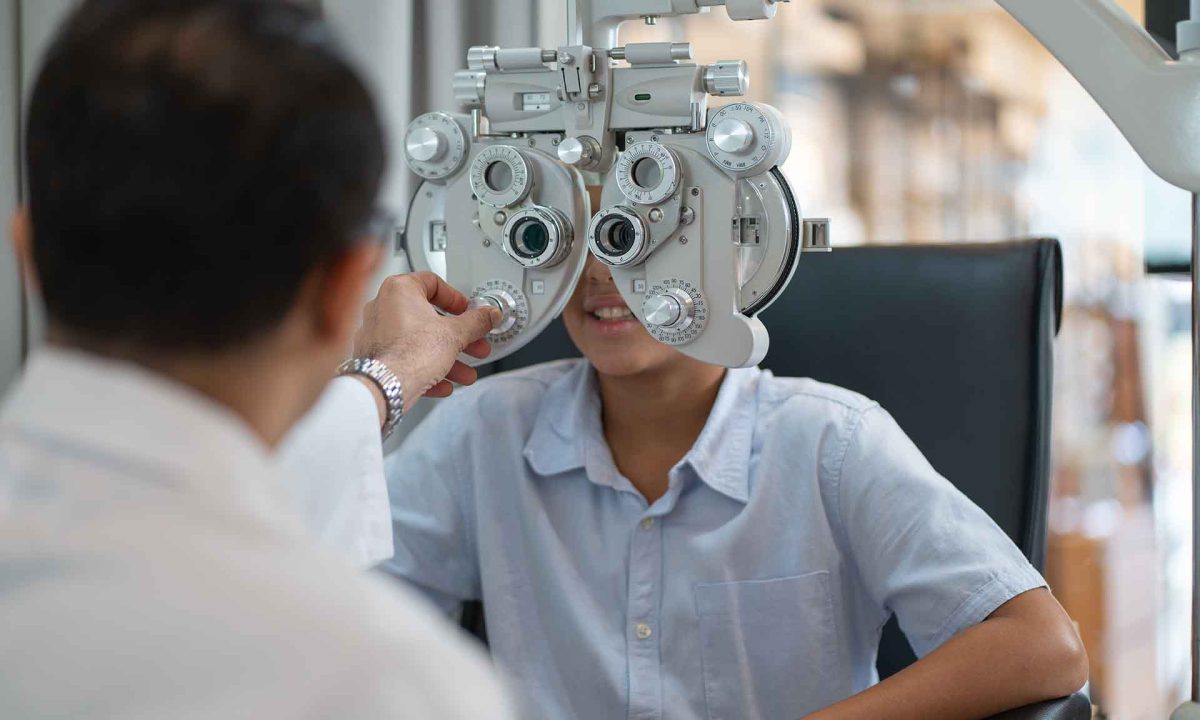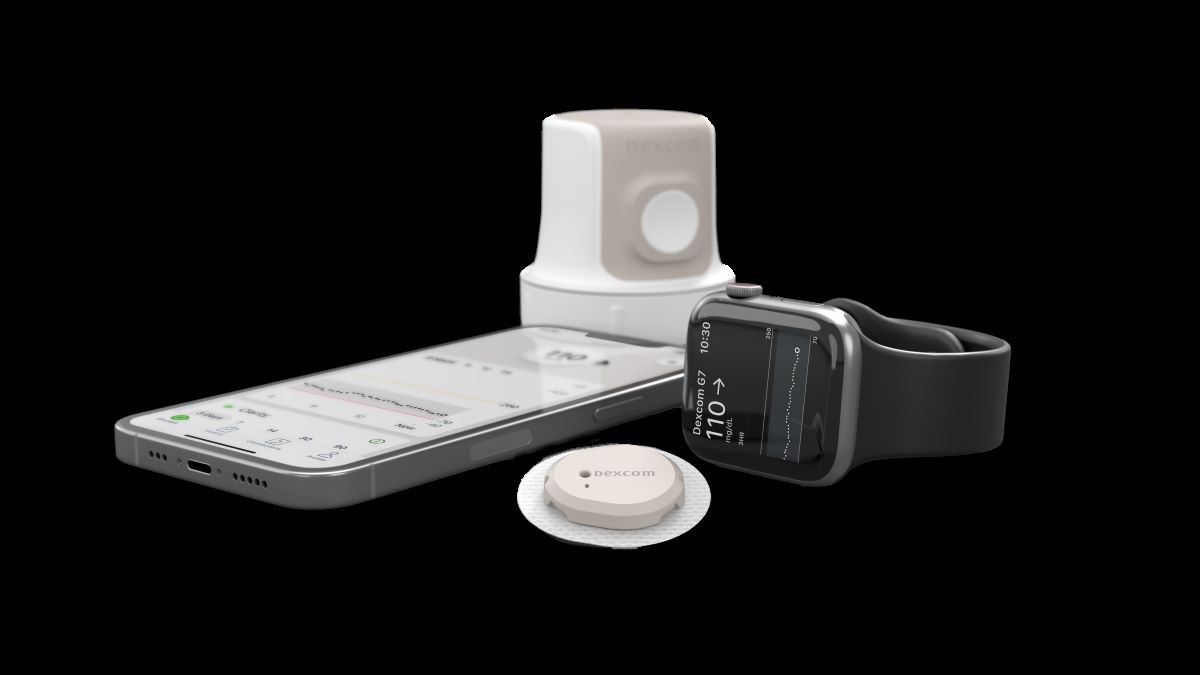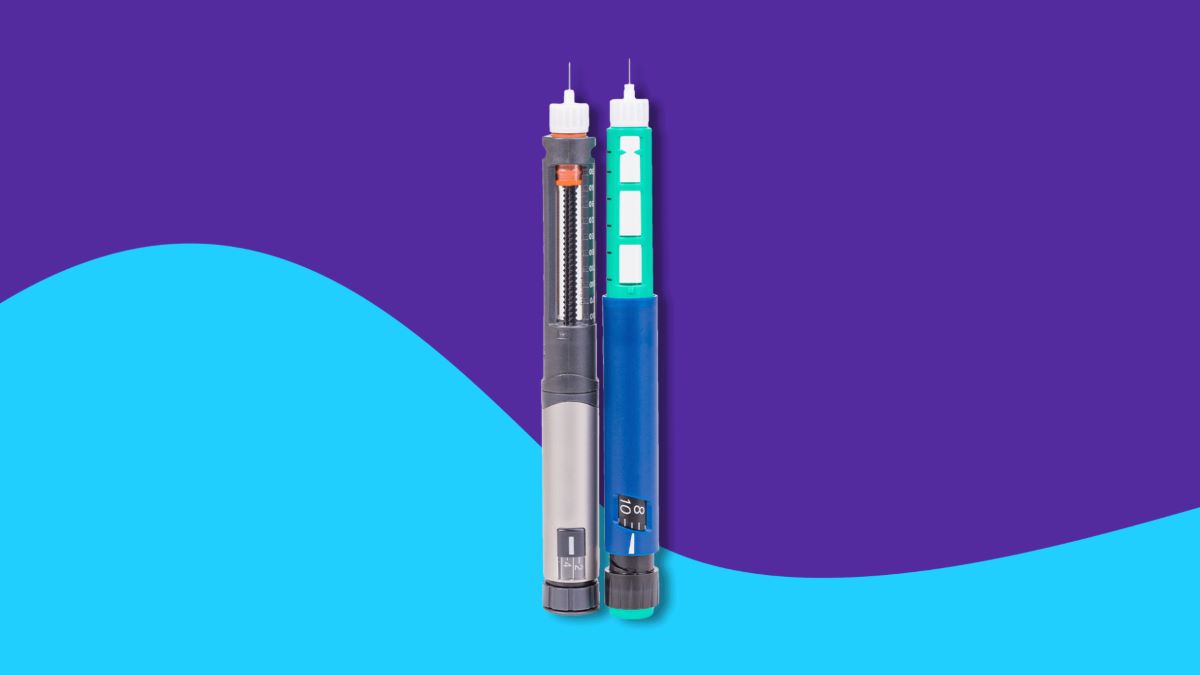

Finance
What Insurance Covers Dexcom G6?
Published: November 18, 2023
Find out which insurance plans cover the Dexcom G6 and how it can benefit your finances, ensuring you have the best coverage for this essential medical device.
(Many of the links in this article redirect to a specific reviewed product. Your purchase of these products through affiliate links helps to generate commission for LiveWell, at no extra cost. Learn more)
Table of Contents
Introduction
When it comes to managing chronic health conditions like diabetes, having the right insurance coverage can make all the difference. For individuals using the Dexcom G6 Continuous Glucose Monitoring (CGM) system, being aware of the insurance options and coverage specifics becomes paramount. Understanding what insurance covers Dexcom G6 can help individuals access this revolutionary technology without breaking the bank.
The Dexcom G6 CGM system offers real-time glucose monitoring, allowing individuals with diabetes to effectively manage their blood sugar levels. This FDA-approved device eliminates the need for fingerstick blood glucose testing and provides continuous data on glucose levels throughout the day and night. This valuable information helps individuals make informed decisions regarding their diet, exercise, medication, and overall diabetes management.
While the Dexcom G6 CGM system is indeed a game-changer in diabetes care, it comes with a financial burden. Fortunately, many insurance providers are now offering coverage for this life-changing technology. Understanding the various types of insurance coverage, the specific providers that cover Dexcom G6, and the process to obtain coverage is vital for those relying on this device to monitor their glucose levels.
In this article, we will delve into the world of insurance coverage for Dexcom G6, providing you with insights and guidance on navigating the coverage process. From determining eligibility to understanding the documentation and authorization requirements, we will walk you through the steps to access the insurance coverage you need. Additionally, we will discuss the appeals process, cost and copay information, and share tips for maximizing your insurance coverage.
By the end of this article, you will have a comprehensive understanding of what insurance covers Dexcom G6 and feel empowered to take control of your diabetes management without worrying about the financial implications.
Understanding Dexcom G6
The Dexcom G6 Continuous Glucose Monitoring (CGM) system is a revolutionary technology that has transformed diabetes management. Unlike traditional glucose meters that require frequent fingerstick tests, the Dexcom G6 CGM system provides continuous and real-time monitoring of glucose levels.
The Dexcom G6 system consists of three main components: a small sensor, a transmitter, and a receiver or compatible smart device. The sensor is inserted just beneath the skin and measures glucose levels in the interstitial fluid every few minutes. The transmitter wirelessly sends this data to the receiver or smart device, where it is displayed on a user-friendly interface.
The Dexcom G6 CGM system offers several key advantages over traditional glucose monitoring methods. Firstly, it provides real-time glucose readings, allowing individuals to track their levels throughout the day and night, even during sleep. This continuous monitoring helps identify trends and patterns, empowering individuals to make informed decisions about their diet, exercise, and medication.
Another significant benefit of the Dexcom G6 system is its ability to provide customizable alerts and alarms. Users can set low and high glucose level thresholds, and the system will audibly and visually notify them if their glucose levels fall below or rise above these limits. These alerts allow for immediate action to prevent hypoglycemia or hyperglycemia episodes, enhancing overall diabetes management.
In addition to glucose levels, the Dexcom G6 CGM system also provides valuable data on the rate and direction of glucose level changes. This information, known as trend arrows, helps users anticipate how their glucose levels are trending and make appropriate interventions, such as adjusting insulin dosage or consuming carbohydrates.
The Dexcom G6 system is not only user-friendly and accurate but also minimally invasive. The sensor is designed to be worn continuously for up to ten days, eliminating the need for frequent sensor insertions. The system is also water-resistant, allowing individuals to engage in activities such as swimming or showering without interrupting glucose monitoring.
Understanding the capabilities and benefits of the Dexcom G6 CGM system is essential when considering insurance coverage. This innovative technology has transformed the lives of many individuals with diabetes, promoting better glucose control and reducing the risk of complications. As we explore insurance coverage for Dexcom G6, having a thorough understanding of the system’s features and advantages will help you fully appreciate the value it brings to your diabetes management.
Types of Insurance Coverage
When it comes to obtaining insurance coverage for the Dexcom G6 Continuous Glucose Monitoring (CGM) system, it is important to understand the different types of coverage available. Insurance providers typically offer coverage options based on the plan type and level of coverage.
1. Private Health Insurance: Many private health insurance plans provide coverage for medical devices such as the Dexcom G6 CGM system. These plans may vary in terms of deductibles, copayments, and coinsurance, so it is essential to review your specific plan’s coverage details. Private health insurance coverage may be obtained through employers or purchased independently.
2. Medicare: Medicare is a federal health insurance program primarily serving individuals aged 65 and older, as well as those with certain disabilities or conditions. Medicare coverage for the Dexcom G6 system is available under specific conditions, such as having a diagnosis of diabetes and meeting certain criteria set by Medicare. It is advisable to consult the Medicare website or speak with a Medicare representative for detailed information regarding eligibility and coverage.
3. Medicaid: Medicaid is a joint federal and state program that provides health coverage to individuals and families with limited income. Coverage for the Dexcom G6 CGM system under Medicaid may vary by state, as each state has its own eligibility criteria and coverage guidelines. Individuals who qualify for Medicaid should contact their state’s Medicaid office to inquire about coverage options for CGM devices.
4. Employer-Sponsored Plans: Many employers offer health insurance plans as part of their employee benefits package. These plans may include coverage for medical devices such as the Dexcom G6 CGM system. The specifics of coverage, including deductibles, copayments, and coinsurance, will vary depending on the employer’s chosen insurance provider and plan.
5. Marketplace Plans: The Health Insurance Marketplace, also known as the Affordable Care Act marketplace or exchange, offers health insurance plans for individuals and families who do not have access to employer-sponsored coverage or government programs like Medicare or Medicaid. Marketplace plans may include coverage for CGM devices, but it is important to review the plan details and select a plan that specifically covers the Dexcom G6 system.
It is crucial to carefully review your insurance plan documents or contact your insurance provider directly to understand the specific coverage options available to you. Each insurance plan may have different requirements, restrictions, and coverage limitations. By understanding the types of insurance coverage offered, you can determine the best approach to obtaining coverage for the Dexcom G6 CGM system that meets your needs and financial situation.
Insurance Providers that Cover Dexcom G6
As the popularity and effectiveness of the Dexcom G6 Continuous Glucose Monitoring (CGM) system continue to grow, more insurance providers are recognizing its value and offering coverage for this innovative technology. While the availability of coverage may vary depending on the insurance plan and policy, several insurance providers are known to cover the Dexcom G6 system.
1. UnitedHealthcare: UnitedHealthcare is one of the largest health insurance providers in the United States and covers the Dexcom G6 system under certain plans. They offer coverage for Medicare, Medicaid, and private health insurance plans. It is important to review the specific plan details to confirm coverage and understand any requirements or restrictions.
2. Aetna: Aetna is another prominent health insurance provider that offers coverage for the Dexcom G6 CGM system. They provide coverage under various plans, including employer-sponsored plans, individual marketplace plans, and Medicare Advantage plans. As with any insurance provider, it is essential to review the plan details and speak with an Aetna representative to confirm coverage and determine any associated costs.
3. Blue Cross Blue Shield (BCBS): BCBS is a network of independently operated health insurance companies that collectively cover millions of individuals across the United States. Many BCBS plans offer coverage for the Dexcom G6 system. However, coverage specifics can vary by state and individual policies. Contacting your local BCBS provider or reviewing the policy documents will provide you with the most accurate and up-to-date information.
4. Cigna: Cigna is a global health service company that offers a range of insurance plans, including coverage for the Dexcom G6 CGM system. Cigna provides coverage through employer-sponsored plans and individual marketplace plans, among others. Understanding the specific coverage details and requirements is crucial for determining eligibility and accessing the benefits of the Dexcom G6 system.
5. Humana: Humana is a leading healthcare company that offers a variety of health insurance plans. They provide coverage for the Dexcom G6 system under certain plans, including employer-sponsored plans and Medicare Advantage plans. It is advisable to check with Humana or review your plan documents to confirm coverage and understand any associated costs.
It is important to note that the coverage availability for the Dexcom G6 system may change over time and vary by plan and policy. Therefore, it is recommended to contact your insurance provider directly or review your plan documents for the most accurate and up-to-date information regarding coverage for the Dexcom G6 CGM system.
Additionally, while specific insurance providers have been mentioned here, it is possible that other insurance companies also provide coverage for the Dexcom G6 system. Consulting with your insurance provider and exploring all available options will help you determine the best insurance plan for accessing the benefits of this life-changing technology.
The Coverage Process
Obtaining insurance coverage for the Dexcom G6 Continuous Glucose Monitoring (CGM) system involves navigating a specific process. Although the process may vary depending on the insurance provider and plan, there are general steps to follow when seeking coverage for this life-changing device.
1. Verification of Coverage: The first step is to verify the specific coverage details of your insurance plan. Review the plan documents or contact your insurance provider directly to determine if the Dexcom G6 CGM system is covered under your plan. Pay attention to any applicable deductibles, copayments, or coinsurance requirements.
2. Medical Necessity: Insurance providers typically require documentation stating the medical necessity of using the Dexcom G6 system. This may include prescriptions from your healthcare provider, medical records, and any other supporting documents that establish the need for continuous glucose monitoring. Check with your insurance provider for their specific medical necessity requirements.
3. Prior Authorization: Some insurance plans may require prior authorization before approving coverage for the Dexcom G6 system. This means that your healthcare provider will need to submit a request to your insurance company, providing the necessary documentation and justifying why the device is medically necessary. The insurance company will review the request and make a determination regarding coverage.
4. Coordination with Healthcare Provider: Work closely with your healthcare provider to ensure that all necessary paperwork is completed and submitted accurately. They will play a crucial role in obtaining the required documents and advocating for your coverage needs.
5. Approval and Appeals Process: Once the prior authorization request is submitted, the insurance company will review the information and make a decision regarding coverage. If your request is approved, you can move forward with the next steps. However, if your request is denied initially, you have the option to appeal the decision. The appeals process typically involves providing additional supporting documentation and presenting a case for why coverage should be granted.
6. Supplier and Device Selection: After obtaining approval for coverage, you can work with an authorized supplier to order and receive the Dexcom G6 CGM system. The supplier will guide you through the ordering process and provide any necessary training or support for using the device.
7. Ongoing Coverage: It is important to keep track of any changes in your insurance plan and continuously communicate with your insurance provider to ensure ongoing coverage for the Dexcom G6 system. This may include updating eligibility documentation or submitting additional paperwork upon request.
Remember, the coverage process may vary based on your specific insurance plan and provider, so it is crucial to familiarize yourself with their requirements and guidelines. Be patient and persistent throughout the process, and don’t hesitate to seek assistance or guidance from your healthcare provider or insurance representative.
Determining Eligibility for Coverage
When seeking insurance coverage for the Dexcom G6 Continuous Glucose Monitoring (CGM) system, it is important to understand the eligibility criteria set by insurance providers. While the specific requirements may vary depending on the insurance plan and policy, there are common factors that determine eligibility for coverage.
1. Diagnosis of Diabetes: Typically, insurance providers require individuals to have a documented diagnosis of diabetes to be eligible for coverage. This may include type 1 diabetes, type 2 diabetes, gestational diabetes, or other specific forms of diabetes. Medical records or a doctor’s diagnosis may be required as proof.
2. Medical Necessity: Insurance providers often require evidence of medical necessity to justify coverage for the Dexcom G6 system. This includes demonstrating that the device is necessary to manage and monitor blood glucose levels effectively. Your healthcare provider will play a crucial role in documenting and supporting the medical necessity of the device.
3. Insurance Plan Coverage: Different insurance plans have varying coverage options and policies regarding the Dexcom G6 system. Review your specific insurance plan documents or contact your insurance provider to understand the coverage details and determine if the Dexcom G6 system is included in your plan’s coverage options.
4. Age Restrictions: Some insurance providers may have age restrictions for coverage of the Dexcom G6 system. For instance, coverage may be limited to certain age groups, such as adults or children. It is important to check for any age-related eligibility requirements in your insurance plan.
5. Prior Authorization Criteria: Insurance plans may require prior authorization before approving coverage for the Dexcom G6 system. Prior authorization typically involves submitting a request to your insurance provider, along with necessary documentation from your healthcare provider, to demonstrate the medical necessity of the device.
6. Deductibles, Copayments, and Coinsurance: Eligibility for coverage may also be impacted by the financial responsibilities associated with your insurance plan. This includes any deductibles, copayments, or coinsurance that you may be required to pay before or after coverage is provided. Be sure to review your insurance plan details to understand your financial obligations.
It is important to consult with your healthcare provider and insurance representative to determine your eligibility for coverage. They can guide you through the process, help gather the necessary documentation, and advocate for your coverage needs. Additionally, staying informed about the specific eligibility criteria and requirements of your insurance plan will ensure a smoother and more successful process in obtaining coverage for the Dexcom G6 CGM system.
Documentation and Authorization Requirements
When seeking insurance coverage for the Dexcom G6 Continuous Glucose Monitoring (CGM) system, there are specific documentation and authorization requirements that need to be met. These requirements may vary depending on the insurance provider and plan. It is essential to understand and fulfill these requirements to increase the chances of obtaining coverage for the Dexcom G6 system.
1. Prescription: A prescription from your healthcare provider is typically required to demonstrate the medical necessity of using the Dexcom G6 CGM system. The prescription should clearly state your diagnosis, the need for continuous glucose monitoring, and a recommendation for the Dexcom G6 system specifically.
2. Medical Records: Insurance providers may request relevant medical records to support the need for the Dexcom G6 CGM system. These records can include blood glucose logs, A1C test results, evidence of problematic hypoglycemia or hyperglycemia episodes, and any other relevant medical documentation that demonstrates the medical necessity of continuous glucose monitoring.
3. Prior Authorization: Some insurance plans require prior authorization before approving coverage for the Dexcom G6 system. Prior authorization involves submitting a request to your insurance provider, typically through your healthcare provider’s office, providing the necessary documentation and justifying the medical necessity of the device. The insurance company will review the request to determine if coverage should be granted.
4. Letters of Medical Necessity: Insurance providers may require a letter of medical necessity to further support the coverage request. This letter is typically written by your healthcare provider and outlines your medical condition, the difficulties you face in managing blood glucose levels, and why the Dexcom G6 CGM system is crucial for your diabetes management.
5. Supplier Documentation: Insurance providers may ask for documentation from the authorized supplier who will provide the Dexcom G6 system. This documentation can include invoices, itemized statements, and any other necessary paperwork to confirm the purchase and supply of the device.
It is essential to closely follow the documentation requirements specified by your insurance provider. Consult with your healthcare provider to ensure that all necessary paperwork, including prescriptions, medical records, and letters of medical necessity, are completed accurately and submitted in a timely manner.
Additionally, it is important to understand the authorization process and adhere to any prior authorization requirements that your insurance plan may have. Coordinating with your healthcare provider and providing all requested information will increase the likelihood of obtaining the necessary authorization for coverage of the Dexcom G6 CGM system.
Be sure to keep copies of all documentation submitted and maintain open communication with your insurance provider throughout the authorization process. If there are any questions or concerns regarding the documentation or authorization requirements, don’t hesitate to reach out to your insurance provider for clarification and guidance.
Appeals Process
In some cases, insurance providers may initially deny coverage for the Dexcom G6 Continuous Glucose Monitoring (CGM) system. However, you have the right to appeal this decision and present additional information and arguments to support your case for coverage. Understanding the appeals process is crucial for advocating for your coverage needs.
1. Review Denial Explanation: When you receive a denial of coverage, carefully review the explanation provided by your insurance provider. Understand the specific reasons for the denial, including any documentation or criteria that was missing or incomplete.
2. Contact Your Healthcare Provider: Reach out to your healthcare provider to discuss the denial and inquire about their willingness to support your appeal. They can provide additional documentation, letters of medical necessity, or any other information that strengthens your case.
3. Appeal Submission: Follow the instructions provided by your insurance provider to submit your appeal. This may involve completing specific forms, providing additional documentation, and writing a formal letter explaining why the Dexcom G6 CGM system is medically necessary for your diabetes management.
4. Timely Submission: Ensure that you submit your appeal within the designated timeframe specified by your insurance provider. Late submissions may result in the appeal being denied on procedural grounds.
5. Gather Supporting Documentation: Collect any new and relevant documentation that strengthens your case for coverage. This can include updated medical records, blood glucose logs, letters of support from healthcare professionals, or any other evidence that demonstrates the medical necessity and effectiveness of the Dexcom G6 CGM system in your diabetes management.
6. Maintain Clear and Concise Communication: Clearly articulate your need for the Dexcom G6 system and explain how it will improve your diabetes management. Be respectful and professional in your communication, outlining the impact that denial of coverage has on your overall health and well-being.
7. Follow-Up and Persistence: After submitting your appeal, follow up with your insurance provider to ensure they have received all necessary documentation and to inquire about the status of your appeal. Be persistent in advocating for your case and do not hesitate to escalate the appeal if necessary.
8. Seek Assistance if Needed: If you encounter challenges during the appeals process or feel overwhelmed, consider reaching out to patient advocacy organizations or legal professionals who specialize in insurance appeals. They can provide guidance, support, and expertise to help navigate the process effectively.
Remember, each insurance provider may have their own specific appeals process and timeline. It is essential to carefully review the denial explanation provided by your insurance provider and follow their instructions for submitting an appeal. By providing compelling evidence and making a strong case for coverage, you increase the chances of overturning the initial denial and securing the Dexcom G6 CGM system under your insurance plan.
Cost and Copay Information
Understanding the cost and copay information associated with obtaining the Dexcom G6 Continuous Glucose Monitoring (CGM) system is essential for planning and budgeting. While the specifics may vary depending on your insurance plan and policy, here are some key points to consider:
1. Deductibles: Deductibles are the out-of-pocket expenses you must pay before your insurance coverage kicks in. Check your insurance plan details to determine if you have a deductible and how much it is. The cost of the Dexcom G6 system may contribute towards meeting your deductible.
2. Copayments: Copayments are fixed amounts that you are responsible for paying for each prescription or medical service. Review your insurance plan to see if copayments apply to the Dexcom G6 system. The copayment amount may vary depending on the specific insurance plan.
3. Coinsurance: Coinsurance is a percentage of the total cost of the Dexcom G6 system that you are responsible for paying. For example, if you have a 20% coinsurance, you would pay 20% of the total cost, and your insurance would cover the remaining 80%. Review your insurance plan to understand if coinsurance applies and what percentage you are responsible for.
4. In-Network vs. Out-of-Network: Insurance plans often have a network of preferred providers. Ensure that the supplier or pharmacy where you plan to purchase the Dexcom G6 system is considered in-network by your insurance plan. Out-of-network providers may result in higher costs or reduced coverage.
5. Coverage Limits: Some insurance plans may have coverage limits or restrictions on the frequency of coverage for medical devices like the Dexcom G6 system. Review your plan details to understand if there are any limitations on the number of sensors or transmitters covered per month or year.
6. Manufacturer Assistance Programs: Dexcom offers various assistance programs to help individuals with the costs associated with the G6 CGM system. These programs include patient assistance, co-pay assistance, and other financial assistance options. Research these programs and see if you qualify for any of them to help offset the cost of the device.
7. Pricing and Negotiation: Understand the pricing of the Dexcom G6 system and compare it with your insurance coverage. You may also consider negotiating with the supplier or pharmacy to ensure you are getting the best price possible for the device.
Keep in mind that while insurance coverage can significantly reduce the cost of the Dexcom G6 system, there may still be out-of-pocket expenses. It is important to be financially prepared and budget accordingly. Review your insurance plan details, contact your insurance provider, and consult with the authorized supplier to get a clear understanding of the cost and copayments associated with obtaining the Dexcom G6 CGM system.
By being prepared and informed about the financial aspects, you can make well-informed decisions and ensure that the Dexcom G6 system is affordable and accessible for your diabetes management needs.
Tips for Maximizing Insurance Coverage
When it comes to obtaining insurance coverage for the Dexcom G6 Continuous Glucose Monitoring (CGM) system, here are some helpful tips to maximize your chances of securing coverage and making the most of your insurance benefits:
1. Review Your Insurance Plan: Carefully read through your insurance plan documents to understand the coverage details and requirements for the Dexcom G6 system. Familiarize yourself with any deductibles, copayments, or coinsurance that may apply.
2. Communicate with Your Healthcare Provider: Maintain open communication with your healthcare provider regarding your need for the Dexcom G6 system. They can provide essential documentation, letters of medical necessity, and support your case for coverage.
3. Research Insurance Providers: Look into insurance providers known to cover the Dexcom G6 system. Check their track record, customer reviews, and coverage policies to find the provider that best suits your needs.
4. Understand Prior Authorization: If prior authorization is required, ensure that all necessary paperwork is completed accurately and promptly. Follow up with your insurance provider to track the progress of your request.
5. Appeal if Necessary: If your initial request for coverage is denied, don’t be discouraged. Take advantage of the appeals process and provide additional supporting documentation to strengthen your case.
6. Stay Informed: Keep yourself updated on any changes to your insurance plan’s coverage policies or criteria. This can help you adapt your approach and ensure ongoing coverage for the Dexcom G6 system.
7. Seek Assistance: If you encounter challenges or face difficulties navigating the insurance coverage process, reach out to patient advocacy organizations or legal professionals who specialize in insurance appeals. They can provide guidance and support throughout the process.
8. Utilize Manufacturer Assistance Programs: Explore assistance programs offered by Dexcom, such as patient assistance and co-pay assistance programs. These programs can help reduce the financial burden associated with obtaining the Dexcom G6 system.
9. Document Everything: Keep records of all communication, forms, and documentation related to your insurance coverage. Having a thorough record will help you stay organized and provide evidence in case of any disputes or appeals.
10. Stay Persistent: Insurance coverage can sometimes be complex and challenging to navigate. Stay persistent and advocate for your needs. If one approach doesn’t work, try alternative strategies or seek further guidance.
Remember, each insurance provider and plan may have unique requirements and processes for obtaining coverage. By being proactive, organized, and persistent, you can maximize your insurance coverage for the Dexcom G6 CGM system and ensure that it becomes an integral part of your diabetes management plan.
Conclusion
Obtaining insurance coverage for the Dexcom G6 Continuous Glucose Monitoring (CGM) system is a crucial step in managing diabetes effectively. This innovative technology provides real-time glucose monitoring, empowering individuals to make informed decisions about their diet, exercise, and medication.
Understanding what insurance covers Dexcom G6 is essential for accessing this life-changing device without incurring significant financial burdens. By familiarizing yourself with the different types of insurance coverage, researching insurance providers that cover Dexcom G6, and navigating the coverage process, you can increase your chances of securing the coverage you need.
Throughout the process, it is important to gather and submit the necessary documentation, work closely with your healthcare provider, and advocate for your coverage needs. Be prepared to navigate the appeals process if necessary, and maximize your insurance benefits by staying informed about cost and copay information.
Remember to explore manufacturer assistance programs and seek guidance from patient advocacy organizations or legal professionals if needed. By following these tips and being persistent in your efforts, you can enhance your chances of obtaining the necessary coverage for the Dexcom G6 system.
Ultimately, insurance coverage for the Dexcom G6 CGM system can significantly improve your diabetes management and quality of life. Stay informed, proactive, and engaged in the process to maximize your insurance coverage and take control of your diabetes management journey.
Disclaimer: The information provided in this article is for informational purposes only and should not be considered as medical or insurance advice. It is important to consult with your healthcare provider and insurance representative to understand your specific coverage options and requirements.














